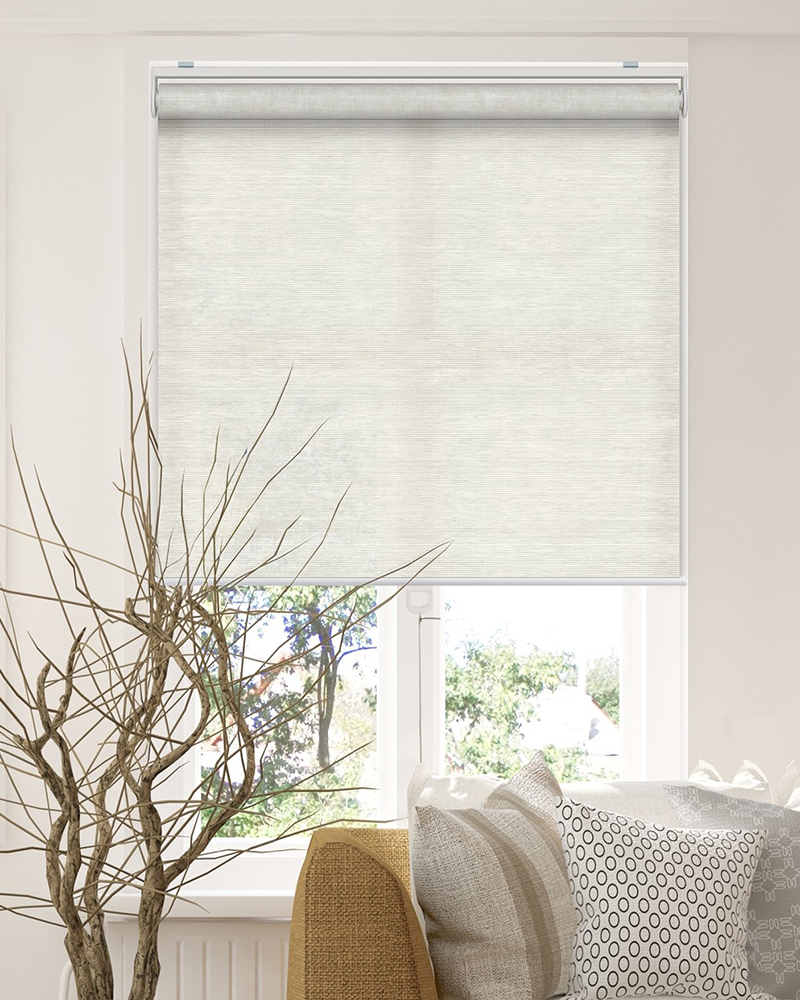
Roller blind fabric plays a crucial role in blocking ultraviolet (UV) rays, which helps in preventing indoor furniture from fading. This relationship is based on the fabric's ability to control the amount of sunlight, especially harmful UV radiation, that enters a room. Furniture, curtains, and other interior furnishings exposed to direct sunlight over time often show signs of fading, discoloration, and material degradation. The primary reason for this damage is prolonged exposure to UV rays, which break down the chemical bonds in dyes and fibers, leading to faded colors and weakened material integrity. Roller blinds with UV-blocking capabilities offer a practical solution to this problem, extending the life and appearance of indoor furniture.
The sun emits various types of radiation, with ultraviolet (UV) rays being particularly harmful to furniture. UV radiation falls into two main categories: UVA and UVB. UVA rays penetrate deep into materials, causing gradual fading and degradation of furniture surfaces, while UVB rays, though less penetrating, cause more direct surface damage. Both types contribute to the breakdown of color pigments in furniture fabrics, wood finishes, and upholstery, causing fading over time. UV rays also weaken fabric fibers and wooden structures, making them more brittle and prone to damage. Preventing this exposure is essential for maintaining the appearance and durability of indoor furnishings.
The design and material composition of roller blind fabrics directly affect their ability to block UV rays. Many roller blinds are made from synthetic materials like polyester or PVC-coated fabrics, which are known for their durability and UV-blocking properties. Some blinds are also coated with special reflective materials that further enhance their ability to block UV radiation. These fabrics can significantly reduce the amount of UV light that penetrates through windows, thus minimizing the exposure of furniture to harmful rays.
The level of UV protection offered by roller blinds depends on several factors, including the type of fabric, its thickness, and any treatments or coatings applied. Some roller blind fabrics are designed to block up to 99% of UV rays, providing nearly complete protection for indoor furnishings. Even lighter, more translucent fabrics can still block a substantial portion of UV radiation, allowing for natural light to enter the room while still offering protection from fading.
Another important factor in the relationship between roller blind fabrics and UV protection is opacity. Roller blind fabrics come in varying degrees of opacity, ranging from sheer to blackout. Sheer fabrics allow more light to pass through but still filter out a portion of UV rays, making them suitable for spaces where natural light is desired but furniture protection is also a concern. On the other hand, blackout roller blinds offer maximum UV protection by completely blocking out sunlight. These blinds are ideal for rooms where furniture is especially vulnerable to fading, such as living rooms with large windows or sunrooms.

The ability to control light while blocking UV rays is one of the primary benefits of roller blinds. Unlike heavy curtains or shades, which may block too much light, roller blinds can be adjusted to allow just the right amount of natural light to enter the room. This flexibility makes them a popular choice for homeowners who want to protect their furniture without sacrificing daylight.
In addition to blocking UV rays, roller blind fabrics also help manage heat from sunlight. Prolonged exposure to heat can accelerate the fading process, particularly for wooden furniture and leather upholstery, which may crack or warp under extreme temperatures. UV-blocking roller blinds reduce heat buildup in a room by reflecting sunlight away from the windows. This not only protects furniture but also helps maintain a cooler, more comfortable indoor environment.
By reducing the amount of sunlight that enters a room, roller blinds also help lower energy costs, as less heat is transferred into the space. This added benefit of thermal management makes UV-blocking roller blinds a practical solution for homeowners looking to protect their interiors while improving energy efficiency.
Beyond their functional benefits, roller blind fabrics also offer aesthetic advantages. They come in a wide range of colors, patterns, and textures, allowing homeowners to match their interior design preferences while also ensuring UV protection. Whether a minimalist, sleek look is desired or a bold statement with textured fabrics, roller blinds can enhance the overall aesthetic of a room while serving a practical purpose.
Roller blinds are also easy to use and maintain. Many models come withmotorized or manual options for adjusting the blinds' height, making it simple to control the amount of light entering a room throughout the day. The low-maintenance nature of roller blinds, coupled with their ability to protect furniture, makes them a popular choice for modern homes.
The relationship between roller blind fabric and the blocking of UV rays is a significant one, as it plays a critical role in preserving the appearance and longevity of indoor furniture. UV radiation from the sun is one of the primary causes of fading, discoloration, and material degradation in furniture, carpets, and other interior furnishings. Roller blind fabrics, particularly those designed with UV-blocking capabilities, help mitigate this damage by reducing the amount of harmful sunlight that enters a room. By offering varying levels of opacity, light control, and thermal protection, roller blinds provide an effective and aesthetically pleasing solution to prevent fading and extend the life of indoor furniture.